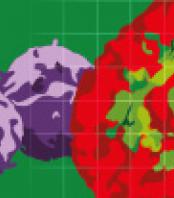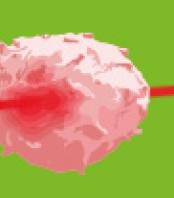Agilent provides xCELLigence impedance-based, label-free, real time cell analysis system and NovoCyte flow cytometers.

Automated microscopy and Spatial Proteomics
Real-time, label free cell analysis
Nano and micro particle analysis

Accelerate to discover
Related topics
Theranostics: From Mice to Men and Back

Jun 25, 2024
Recorded webinar
Presenters: Prof. Dr. Ken Herrmann and Prof. Dr. Katharina Lückerath – Moderator: Hannah Notebaert
X-RAD 320 for irradiation therapy during quantifying study for in vivo collagen reorganization

Jun 5, 2024
Quantifying in vivo collagen reorganization during immunotherapy in murine melanoma with second harmonic generation...
Use of MRI and microCT to evaluate gene therapy for the treatment of discogenic back pain

Jun 4, 2024
MRI images were obtained using the 9.4T Bruker BioSpec system, equipped with 40 mm 1H quadrature volume resonator, and...
High-frequency Ultrasound System For Preclinical Imaging

May 13, 2024
The Prospect T1 is an innovative high-frequency ultrasound system designed specifically for in vivo preclinical imaging...
“Range+T “ for Tight Sizing of HMW Libraries

May 10, 2024
We decided to do a deep dive into Range+T to get a better handle the method, and to develop best practices for using...
April 2024 publication revealing benefits of using intravital microscopy in trascriptomics studies

May 8, 2024
Transcriptional activation of Bmal1 drives the inflammatory activity of monocytes by modulating mitochondrial unfolded...
Minimal information for studies of extracellular vesicles (MISEV2023)

May 7, 2024
MISEV2023 is intended to aid any and all EV researchers: from those just starting their EV journey to more established...
Omics Studies of Tumor Cells under Microgravity Conditions

May 6, 2024
It is important for the analysis of data from space experiments to distinguish unspecific stress reactions from...

May 31, 2017
Mycoviruses are usually transmitted horizontally via hyphal anastomosis and vertically via sexual/asexual spores. Previously, we reported that a gemycircularvirus, Sclerotinia sclerotiorum hypovirulence-associated DNA virus 1 (SsHADV-1), could infect its fungal host extracellularly. Here, we discovered that SsHADV-1 could infect a mycophagous insect, Lycoriella ingenua, and use it as a transmission vector. Virus acquired by larvae feeding on colonies of a virus-infected strain of S. sclerotiorum was replicated and retained in larvae, pupae, adults, and eggs. Virus could be transmitted to insect offspring when larvae were injected with virus particles and allowed to feed on a nonhost fungus. Virus replication in insect cells was further confirmed by inoculating Spodoptera frugiperda cells with virus particles and analyzing with RT-PCR, Northern blot, immunofluorescence, and flow cytometry assays. Immunofluorescence reaction was observed under a confocal microscope, and infection rates of cells were counted by NovoCyte flow cytometer. Larvae could transmit virus once they acquired virus by feeding on virus-infected fungal colony. Offspring larvae hatched from viruliferous eggs were virus carriers and could also successfully transmit virus. Virus transmission between insect and fungus also occurred on rapeseed plants. Virus-infected isolates produced less repellent volatile substances to attract adults of L. ingenua. Furthermore, L. ingenua was easily observed on Sclerotinia lesions in rapeseed fields, and viruliferous adults were captured from fields either sprayed with a virus-infected fungal strain or nonsprayed. Our findings may facilitate the exploration of mycoviruses for control of fungal diseases and enhance our understanding of the ecology of SsHADV-1 and other newly emerging SsHADV-1–like viruses, which were recently found to be widespread in various niches including human HIV-infected blood, human and animal feces, insects, plants, and even sewage.
Related technologies: Conventional flow cytometry
Get more info
Brand profile
Agilent provides xCELLigence impedance-based, label-free, real time cell analysis system and NovoCyte flow cytometers.
More info at:
www.aceabio.com